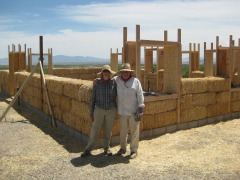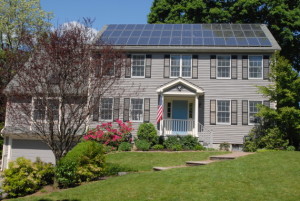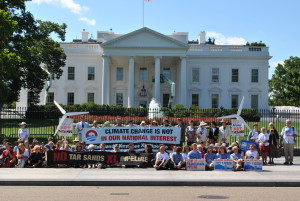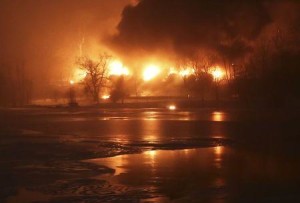For the deliberation that I went to it was in the New Leaf initiative on the Tuesday before break and it was about the energy future in both Pennsylvania and the world in general. They split the debate into three topics the first was fossil fuels, the next was nuclear, and the final one was renewable resources. There were only about seven people there so we did not break down into separate groups but rather discussed with everybody about what we thought about each energy option in both the short and the long term.
For the first topic of fossil fuels the deliberators went through the fact that it currently right now it is a huge benefit economically but has a huge cost to the environment not only in the long term but also in the short term. For example the practice of fracking has dramatically impacted the surrounding communities with not only poisoned drinking water but in some cases flammable drinking water which to me is incredibly scary. That is why the discussion focused on how we can move away from fossil fuels and force the companies who use the practices of fracking to pay for their environmental damage. The solution that was proposed was taxing the fracking companies in Pennsylvania, which have been untaxed under Tom Corbett, and then taking that money to develop research and tax incentives for environmentally safe energy practices.
The next topic we went over was the possibility of nuclear energy, the deliberators went over the fact that despite popular belief is one of the most safe and secure forms of producing energy but is also one of the most cost inefficient ways to produce energy and because of this the industry needs huge government intervention in order for the private sector to make a profit doing it. So as the discussion took place the consensus was that we need to invest in research and provide government subsidies in order to promote private companies in this field. I took a position against the typical consensus because I think that the nuclear industry is too far away from being a profitable industry and that wasting government capital which is limited in its nature to prop up an industry that is decades away from any private sector success would be a mistake.
However, I was definitely not in the majority because the typical feeling around the room was that there was no energy area in which the United States should not invest huge amounts of resources into because if we are not on the forefront of innovation in the new energy future we will miss out on tons of investment and jobs. Therefore all energy fields should be at the very least be researched if not subsidized by the government just in case that particular field becomes the future for energy.
For the third and final topic we talked about is renewable energy, the moderators stated the pros of these is that the supply is infinite and that the options are environmentally-friendly, but as of right now the options available cannot account for all of the energy needs that we have and is not as cost efficient as fossil fuels. Despite, the cons the consensus was very clear that we need to move towards renewables in the long term and also most importantly throw government research money and tax incentives for companies in the renewable energy industry to take advantage of to ensure that the switch to renewable energy happens as fast as possible. The another solution proposed was to incentivize individuals through tax credits for things like solar panels in order move the country closer to environmentally-friendly energy independence.
So as we went into the conclusion we went through the overall thoughts from each approach and then tried to draw a conclusion from the entire thing. As we went through the consensus was clear that we needed fossil fuels in the present to address our energy needs currently but we should tax them for environmental damage. We should also take those tax dollars from the companies who produce fossil fuels in order to invest in research and start up companies in both nuclear and renewable energy fields in order to begin a transition to a cleaner and more efficient energy sector that will drive economic growth.
If you want to take a look at Pennsylvania’s energy future read this article,http://www.pennfuture.org/.











 on arrival in the Gulf Coast this crude oil will be refined and shipped to overseas markets for sale. The Keystone XL Pipeline will not be the first of its kind with other pipelines that not only funnel crude down from out neighbor to the north but also other crude from tar sands. Yet, there has been a largely partisan public debate surrounding this issue for the past 4 years.
on arrival in the Gulf Coast this crude oil will be refined and shipped to overseas markets for sale. The Keystone XL Pipeline will not be the first of its kind with other pipelines that not only funnel crude down from out neighbor to the north but also other crude from tar sands. Yet, there has been a largely partisan public debate surrounding this issue for the past 4 years. truction of the pipeline. The problem is that the numbers surrounding the number of jobs the Keystone Pipeline will create range from exaggerated to hilariously ridiculous. In terms of direction jobs, the Keystone XL Pipeline will end up creating about
truction of the pipeline. The problem is that the numbers surrounding the number of jobs the Keystone Pipeline will create range from exaggerated to hilariously ridiculous. In terms of direction jobs, the Keystone XL Pipeline will end up creating about ment or environmental policy in America. I do not support the construction of the pipeline but honestly the construction of the pipeline itself is neither here nor there. Without the pipeline TransCanada is still going to extract the crude from the tar sands in Alberta. The only difference is that they will have to move it via truck to the gulf coast. It will not change our oil costs, as it will still be sold over sea. A few less temporary jobs will be created but in the end of the day 50 people mean so little to a nation of millions. Generally, I see the construction of the Keystone XL Pipeline as something more symbolic. Construction of this pipeline shows that we as a people are much more willing to spend millions of dollars pumping dirty forms of rude out of the ground than we are willing to support forms of policy that would go towards developing clean forms of energy. What the decision on the Keystone XL Pipeline does do is set a dangerous precedent that America is going to continue to drill its way through the 21st century. Because we are not running out of crude oil, but we are running out of an environment to exploit.
ment or environmental policy in America. I do not support the construction of the pipeline but honestly the construction of the pipeline itself is neither here nor there. Without the pipeline TransCanada is still going to extract the crude from the tar sands in Alberta. The only difference is that they will have to move it via truck to the gulf coast. It will not change our oil costs, as it will still be sold over sea. A few less temporary jobs will be created but in the end of the day 50 people mean so little to a nation of millions. Generally, I see the construction of the Keystone XL Pipeline as something more symbolic. Construction of this pipeline shows that we as a people are much more willing to spend millions of dollars pumping dirty forms of rude out of the ground than we are willing to support forms of policy that would go towards developing clean forms of energy. What the decision on the Keystone XL Pipeline does do is set a dangerous precedent that America is going to continue to drill its way through the 21st century. Because we are not running out of crude oil, but we are running out of an environment to exploit.


